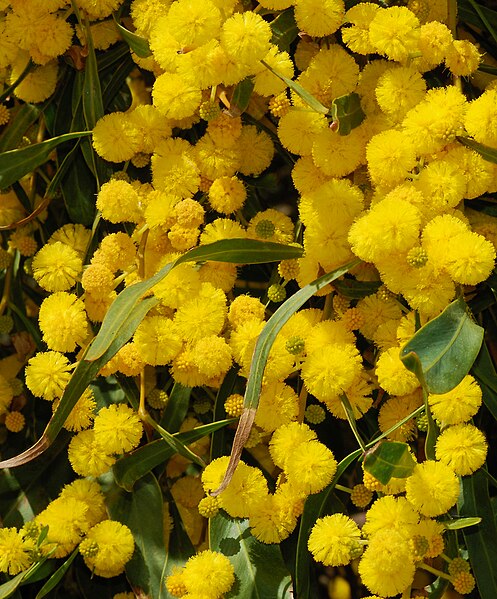Acacia pycnantha, most commonly known as the golden wattle, is a tree of the family Fabaceae. It grows to a height of 8 metres and has phyllodes instead of true leaves. The profuse fragrant, golden flowers appear in late winter and spring, followed by long seed pods. Explorer Thomas Mitchell collected the type specimen, from which George Bentham wrote the species description in 1842. The species is native to southeastern Australia as an understorey plant in eucalyptus forest. Plants are cross-pollinated by several species of honeyeater and thornbill, which visit nectaries on the phyllodes and brush against flowers, transferring pollen between them.
Acacia pycnantha
Habit, Geelong Botanic Gardens
Galls formed by Trichilogaster signiventris wasps on a plant in South Africa
A fly visiting a nectary on a phyllode
Acacia saligna, commonly known by various names including coojong, golden wreath wattle, orange wattle, blue-leafed wattle, Western Australian golden wattle, and, in Africa, Port Jackson willow, is a small tree in the family Fabaceae. Native to Australia, it is widely distributed throughout the south west corner of Western Australia, extending north as far as the Murchison River, and east to Israelite Bay.
The Noongar peoples know the tree as Cujong.
Acacia saligna
Flowers and leaves






